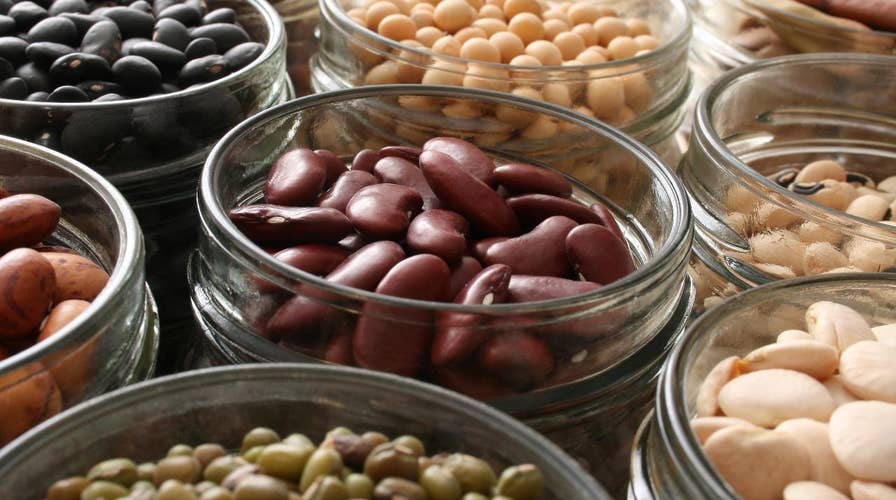Unusual foods being used in beauty products
Using cucumbers, oats and honey is nothing new with it comes to beauty products. But now the beauty industry is turning to unique foods like radishes, beans and peas to give hair and skincare products a boost
Rita Hazan chats with women all day. Often they’re women you’ve heard of—say, Beyonce or Madonna—and just as often, they’re not. But regardless of who’s in this NYC salon owner’s chair, conversation almost always turns to hair product. And while the topic has long inflamed passions, there’s a definite desire of the moment: “Women want more natural ingredients,” says Hazan, whose product formulators have started using corn, for example, to help create gentle shampoo suds—and protect hair color in the process.
“Patients have shown a greater interest in natural skin care, too,” says Doris Day, M.D., clinical associate professor of dermatology at the New York University Langone Medical Center. The reason? It’s no longer simply the perception that naturals are better for you and the environment, but the realization that they can be highly effective, too: “Some of the most potent antioxidants are produce-derived,” she notes.
GET BRIGHTER, GLOWING SKIN WITH THESE TIPS
So where does this growing appetite leave the beauty industry? In search of a broade array of ingredients, says veteran cosmetic chemist Ni’Kita Wilson: “There’s such a huge interest that companies are taking a closer look at all kinds of different foods to see what can be used in products.” Indeed, R&D teams are going well beyond the rosemary that zings up your bath and the honey that soothes your skin to hit every last corner of the grocery store.
Read on for five of their most surprising beauty finds.
Corn
A multitasking beautifier, corn is an effective alternative to increasingly unpopular synthetic exfoliants (those tiny plastic spheres that turn out to be big water pollutants)—and to synthetic lathering agents. You’ll find it in such products as Rita Hazan True Color Shampoo and Caudalie Deep Cleansing Exfoliator. One important note: These products smell nothing like corn. The shampoo is actually a cult favorite for, among other things, its gorgeous blend of white flower scents. Meanwhile, the exfoliating cleanser smells only faintly of mint, if anything. In fact, rest assured: Not one of the products to follow smells like a surprising grocery find.
Beans
“There is a navy bean extract that has been shown to reduce melanogenisis,” says Wilson. Read: Diminished pigment production and dark spots. Thus the navy bean extract in Mary Kay’s beauty editor-beloved TimeWise Tone-Correcting Serum and ClearProof Deep-Cleansing Charcoal Mask. But beans of all kinds, including those on offer at global grocers, are turning up in beauty products as well. One of the best examples: mung beans, long used in Chinese medicine as a detoxing and cooling agent, and now the star of Wei Mung Bean Sprout Stress-Relieving Soothing Mask.
Peas
Little did you know during your childhood protests against those bright green piles on your plate that you’d someday be seeking peas for your skin and hair. “Pea extract is a great ingredient,” says Wilson. “In hair, it strengthens and pumps up strands by forming an imperceptible film.” (Thus such launches as Honest Beauty Honestly Uplifted Volumizing Spray.) “In skin, that same film helps retain moisture,” Wilson explains. One great example? Ole Henriksen Sheer Transormation Perfecting Moisturizer.
Beets
Beets are known as super-moisturizers, so they’re turning up in all kinds of formulations. In Tula's Pro-Gycolic 10% pH Resurfacing Gel, for example, a hydrating beet derivative helps defend against external forces (pollution, UV radiation). Meanwhile, the beetroot extract in Pili Ani Intense Hydrating Facial Cream helps boost the concentration of NMF (natural moisturizing factor) in your skin.
FOLLOW US ON FACEBOOK FOR MORE FOX LIFESTYLE NEWS
Radish
The ferment of this root vegetable—an alternative to synthetic preservatives—can be used in everything from lip gloss to hair styling products. Two good cases in point? HydroPeptide Perfecting Gloss and Ouidad Curl Immersion Silky Soufflé Setting Creme.

